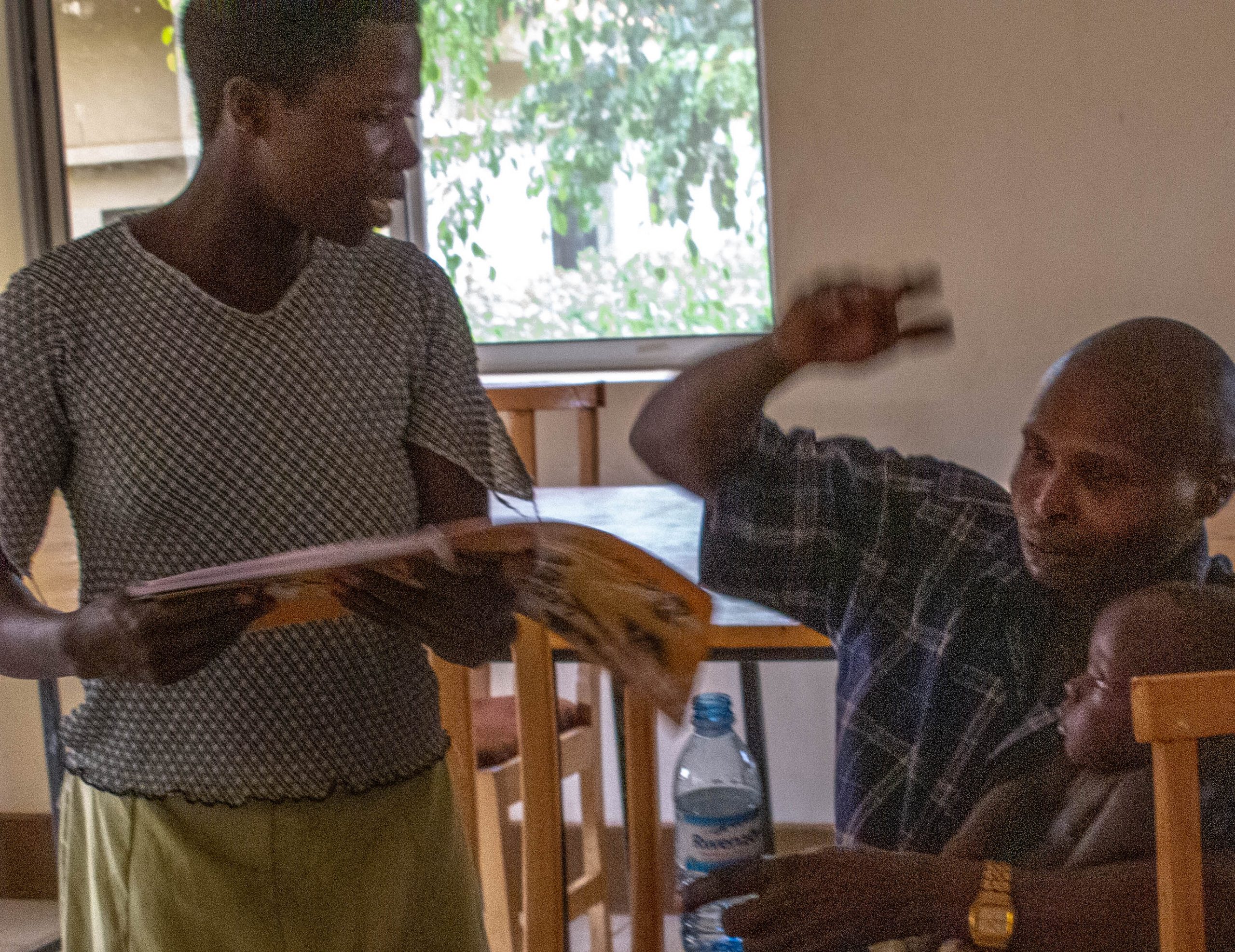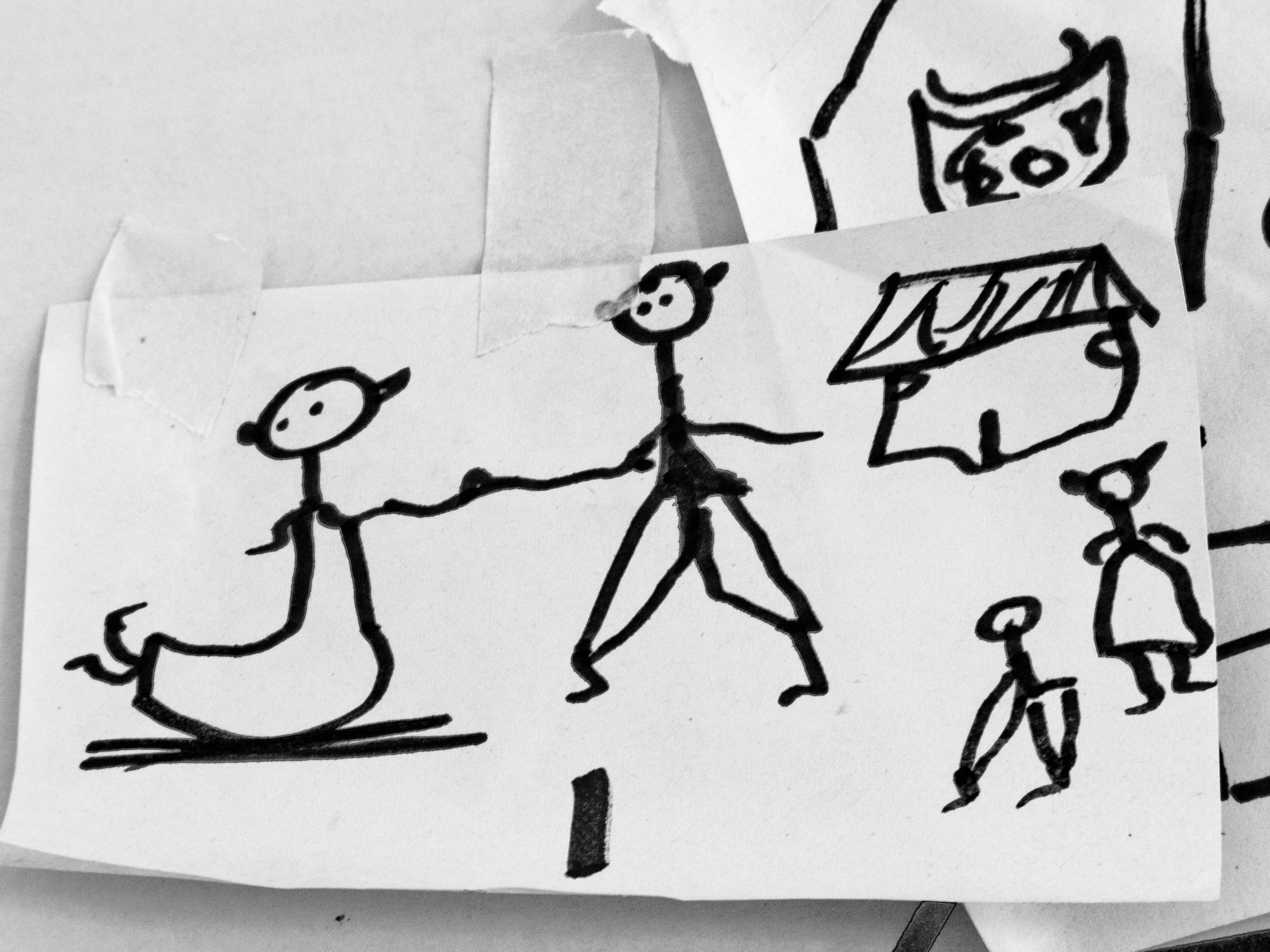Gumutindo Coffee Cooperative,
Mount Elgon, Eastern Uganda
Kabarole Research Centre, Bukonzo Joint,
Mwana Mulho
Rwenzori, Western Uganda
Uganda is one of the countries where I first started to develop the GAMEchange methodologies from 2002, building on other pictorial methodologies that already existed from organisations like Action Aid, and also local Ugandan artists working with development agencies. It is a country where I have a lot of photographs of community drawings and also contextual information from two coffee-producing regions:
- Rwenzoris in Western Uganda with three organisations: Kabarole Research Centre, Bukonzo Joint Cooperative Union and local Community-Based Organisations like Mwana Mulho where I worked first between 2003-2016.
- Mount Elgon in Eastern Uganda with a Fair Trade coffee Cooperative: Gumutindo from a gender empowerment process funded by TWIN UK 2012-2014. This process was linked with Bukonzo Joint from Rwenzoris.
Link to ‘Mother of the Nation’: Mary’s Story, Uganda
Mount Elgon: Gumutindo Coffee Cooperative














Gumutindo is a Fair Trade coffee cooperative on the slopes of Mount Elgon. As elswhere ion the coffee sector, although women perform about 70% of the work on coffee, men own the land and control the coffee money. Married women are generally not admitted as cooperative members – and so are not eligible for training and credit. GALS empowerment methodology was introduced as part of a gender strategy of TWIN-UK who were prominent buyers of Gumutindo coffee and did a lot of the training for them.
Men locked the store to stop the women getting hands on the coffee money. Domestic abuse and male alcoholism were very common (about 70% households). These were dominant features of the role plays at the workshop – see the three different couples in the photos.
The single-image vignettes by women about their situation shown in the slideshow below are some of the most expressive, poignant and raw that I have encountered. Each image manages to tell a story in itself that can be largely understood even by someone from outside. I have not acknowledged the artists because although they were happy that the drawings and photographs from the workshop would be used in manuals etc, that was on the understanding that they would not be identified in ways that might make them more vulnerable if they are known to express themselves in this way.
Equally interesting is the very graphic final drawing by a man of what he did not like about being a man – running after a woman with an erect penis – although he was too embarrassed to explain exactly whether this meant he did not like the fact of his arousal, the fact that women always ran away, or a particular woman was not interested in his advance. He later hid the drawing from view after another man made fun of it.








Narrative Context:
Rwenzori Community-Based Organisations







Community-based organisations in the Rwenzoris to the far West of Uganda: Kabarole Research Centre, Bukonzo Joint Cooperative Union and Mwana Mulho have been working with me to develop and adapting PALS since 2003. Women and men in the area have developed their own pictorial language and do very detailed diagram analysis for their own life planning. Organisations have also integrated the pictorial systems into their organisational planning and impact assessments.
Many of the drawings are very detailed in terms of information, colourful and organisational drawings, like those on the right, are often large and colour-coded with quantification in their adapted number system.
Many of the images are figures doing something that are quite easy to understand for people from the area who know the crops, trees etc. However because they have become a ‘pictorial symbolic language’, there is a tendency for drawings to become formulaic rather than innovative and expressive. Particularly in manuals produced by staff like those on the right where the more polished style is very noticeable. Though understandable as the aim of the manuals is clarity.
But as can be seen from the videos below, the drawings enable women and men to describe and analyse many issues in their lives, including sensitive topics about family relationships, adultery and land ownership that provide rich contextual information as background to the narratives from Gumutindo.
Narrative Context
‘Mother of the nation’??: Constructed Narrative
This video ‘Investing in women farmers in Africa’ is quite interesting for the somewhat patronising and complacent attitude towards women farmers – the compliant but neglected mothers who need ‘support from their men’ so that they can feed their families and feed and educate the nation. Issues of land rights and domestic abuse have been raised since the 1980s and still many countries have not changed. Even Fair Trade working with men’s cooperatives and increasing men’s incomes can simply increase alcoholism and enable men to marry more wives.
What is clear from the workshops in Gumutindo and Rwenzoris, and particularly videos from Bukonzo Joint, is that many women farmers resent many of the cultural practices and inequalities. Wanting rights to land, credit and profitable businesses. Many men after the workshops also support these changes – they have seen their mothers and sisters suffer.
But the video can provide an interesting counterpoint to the realities of women’s lives as they depict them in their drawings and role plays. And documented changes since the workshops can also provide a pointer to future possibilities.

























